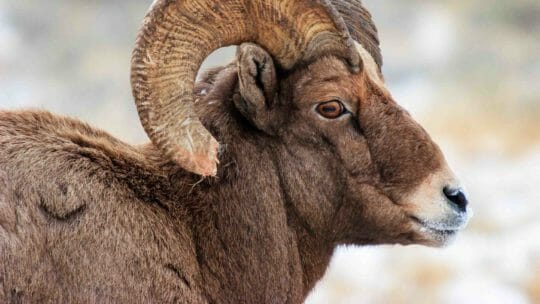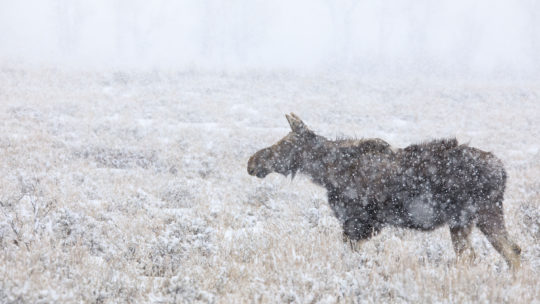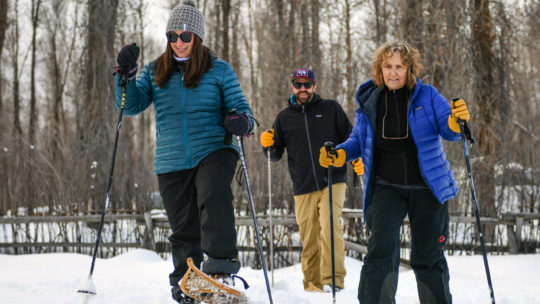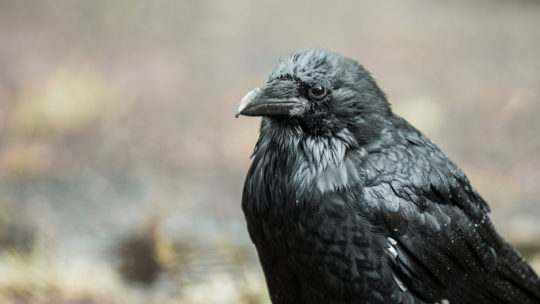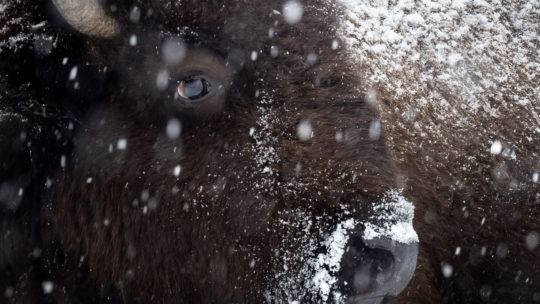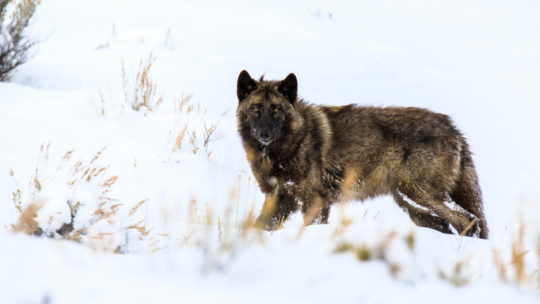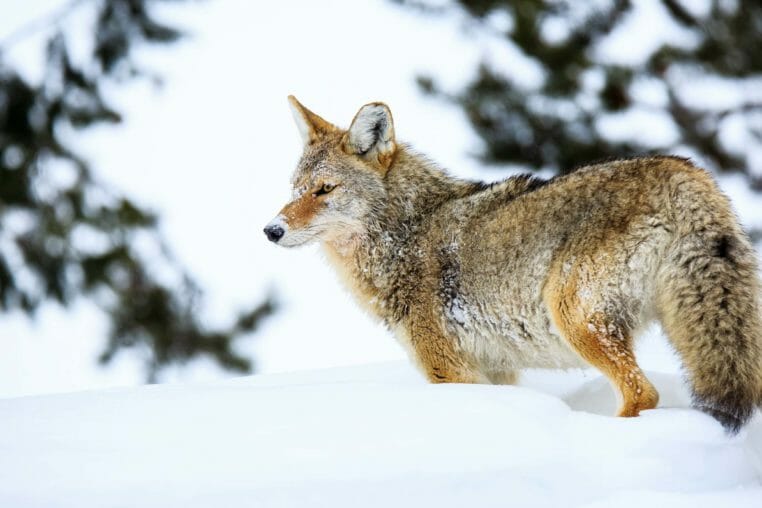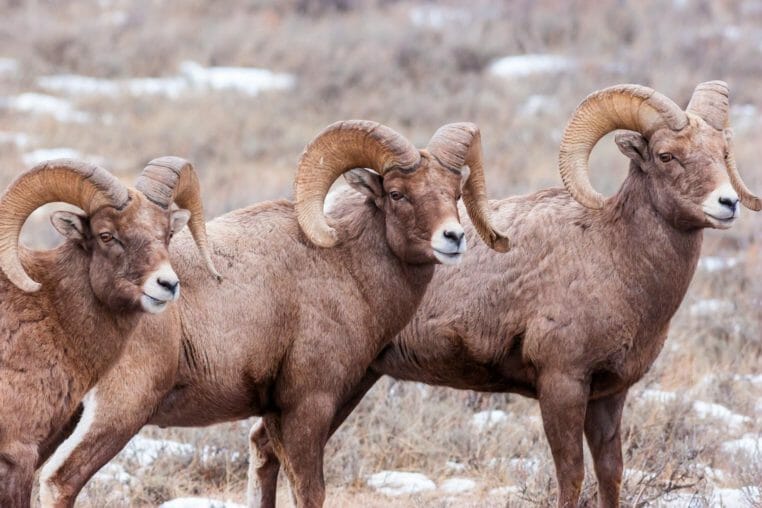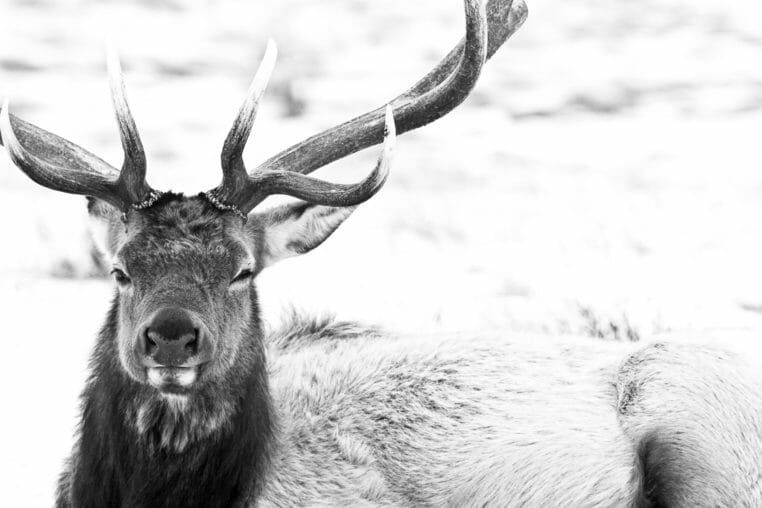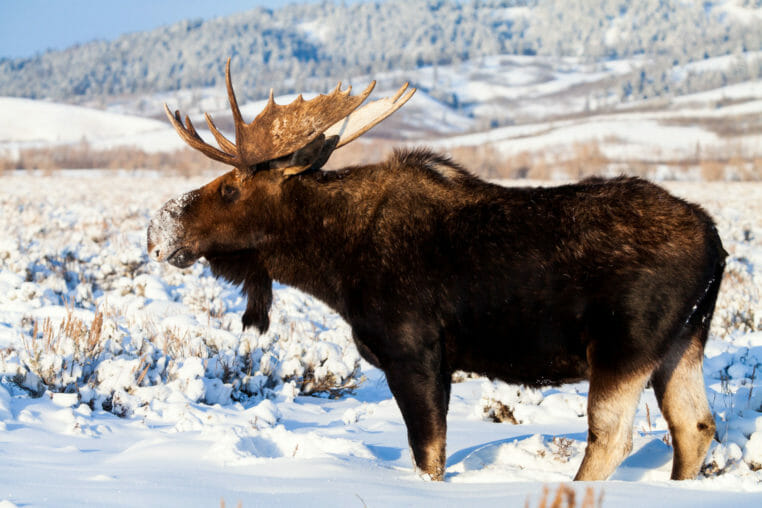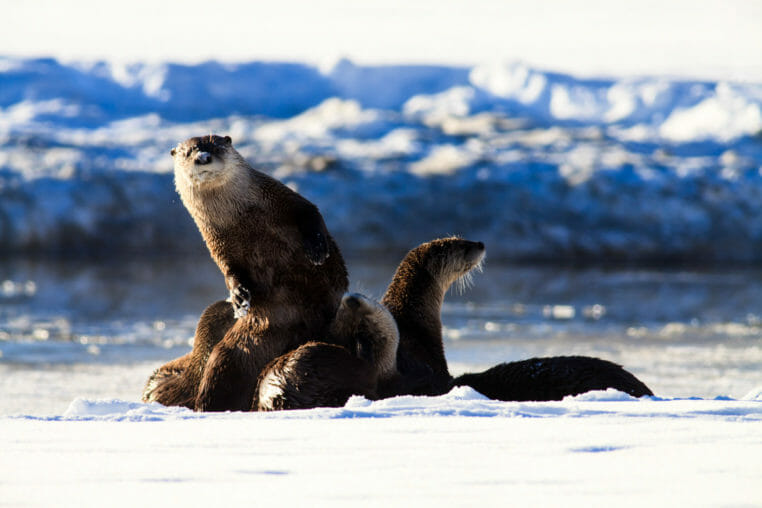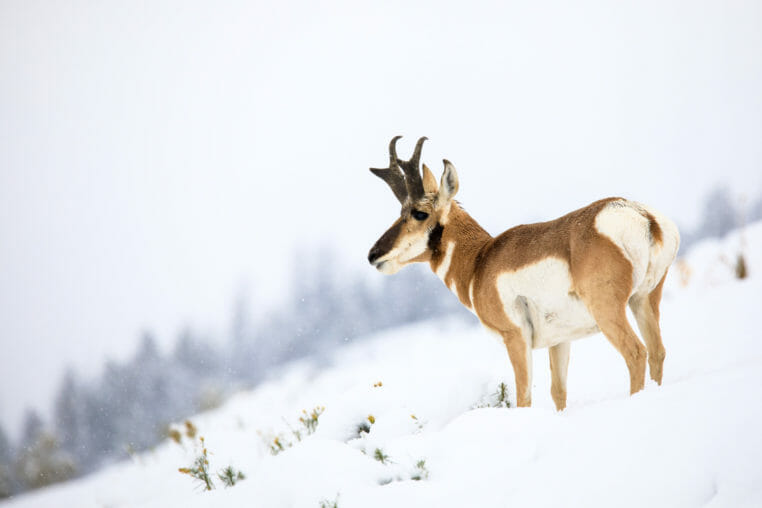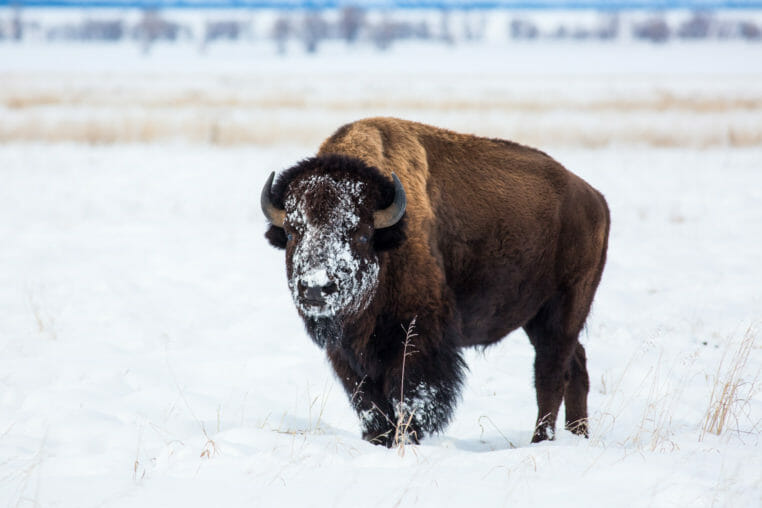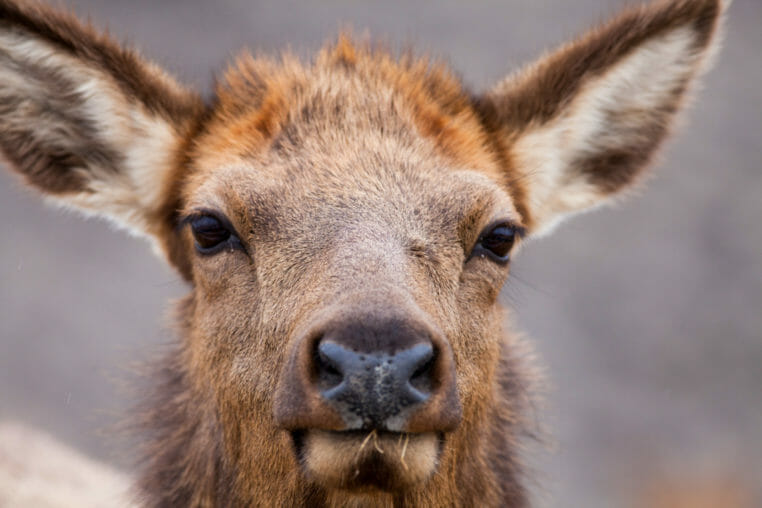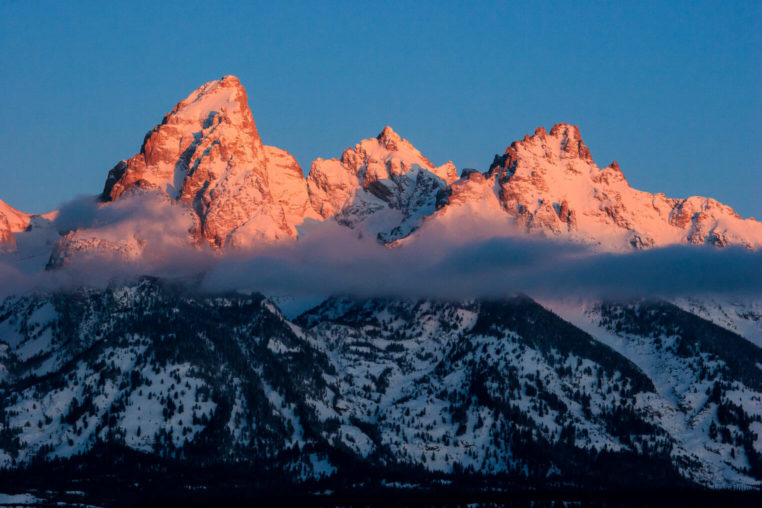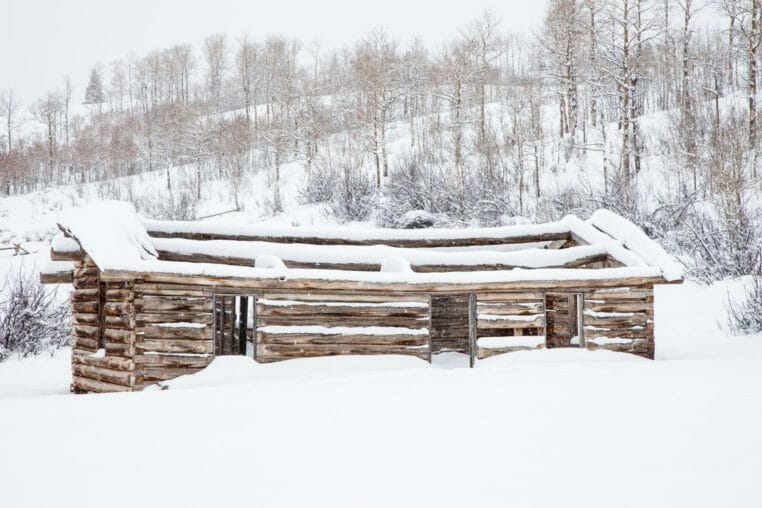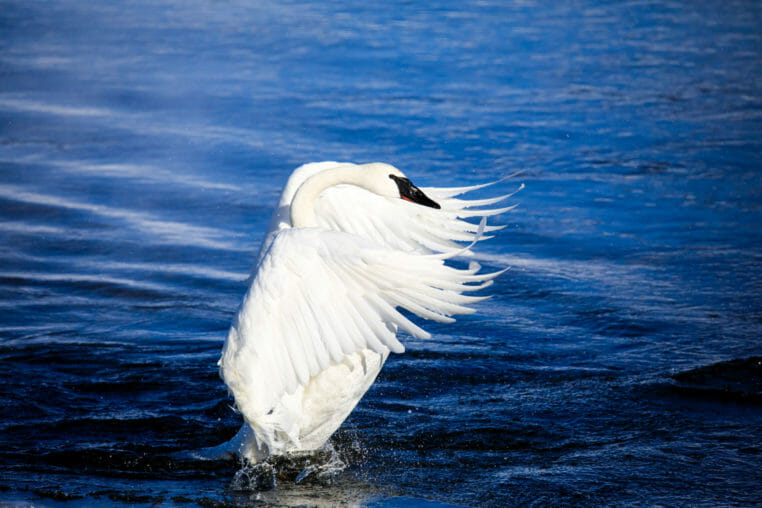Search
Explore
Winter Safaris

Explore our list of premium Wildlife Safaris and Photography Tours in Jackson Hole, Grand Teton and Yellowstone National Park.
Every species in the Greater Yellowstone Ecosystem has adaptations to survive winter, whether it means seeking out less harsh climates, growing a thick winter coat or fattening up before winter so their fat stores can carry them through the cold months when their food might be scarce.
The arrival of winter signals change for all species of the Greater Yellowstone Ecosystem (GYE). Some migrate, like pronghorn, that can travel up to 150 miles to the lower elevation, or ospreys, which fly to warm coastal areas. Elk migrate from higher elevations down to the valley floor and other animals, like the grizzly bears, head into hibernation. For some it’s a change in activity and diet, like the moose that tend to travel less to conserve energy and rely more on the woody vegetation while the aquatic vegetation is under ice. Others take advantage of it being difficult for prey species to move in deep snow, like wolves and mountain lions, which are often light and swift enough to move over the top of the snow to catch deer and elk.
The exact routes and itineraries we take will depend on a number of factors – the most important being your areas of interest, current wildlife sightings and road conditions. One of the great things about our safaris and expeditions is our ability to customize each safari for you. Our guides are all highly experienced with thousands of hours in the field, allowing them to make suggestions and calibrate the adventure to your experience level and desires. Every day in the field is different which makes our safaris more fun for both you and your guides. We hope that you’ll join us on a wildlife safari and walk away with an education and appreciation of this remarkable place we are privileged to call home.
Jackson Hole Wildlife Safaris combines a love of adventure with a passion for wildlife and wild spaces to create a premium, once in a lifetime experience exploring the natural world. It is our belief that active stewardship is the only way to ensure the same experience for future generations. This is why Jackson Hole Wildlife Safaris is committed to a culture of sustainability and is dedicated to purchasing products, establishing partnerships and educating the public in a way that values the protection and conservation of our most valuable resources.
FAQs
What is your cancellation policy?
We have a 48-hour cancellation policy for all single day safaris of 14 guests or less. For groups with 15 or more guests, our cancellation policy is 30 days. We have a 14 day cancellation policy for all 2-3 day safaris. For expeditions and multi-day safaris of 4 days or more, our cancellation policy is 90 days. Cancellations made before the policy goes into effect will receive a full refund with no penalty. Cancellations made within the cancellation policy period will be partially refunded (50%), but cancellations made the day of the departure will not be refunded. We recommend obtaining travel insurance before your departure to protect you from incurring any costs associated with unforeseen circumstances that prevent you from joining us.
What is the weather like during the winter?
Winter in Jackson Hole ranges from early November to early April. Average high temperatures in the valley during the winter season range from 27F to 52F, (-3C to 11C), but daily temperatures can fluctuate far below freezing at times. The valley floor will typically see snow from October through April and in the high alpine elevations, it usually snows from September to June. The high elevation of Jackson Hole has been known to create wild temperature fluctuations from night to day, sometimes by 50F degrees or more. It is important to come prepared for winter conditions, as they can vary.
Average highs and lows by winter months:
November: Average High 39F/4C, Average Low 16F/-8C
December: Average High 28F/-2C, Average Low 6F/-14C
January: Average High 27F/-3C, Average Low 5F/-15C
February: Average High 32F/0C, Average Low 8F/-13C
March: Average High 41F/5C, Average Low 16F/-9C
April: Average High 52F/11C, Average Low 24F/-4C
Further Reading
Extraordinary Wildlife on the National Elk Refuge
Field Notes: Feb 26, 2020
Guides in the Greater Yellowstone Ecosystem are fortunate. We are able to witness some of the best wildlife in the world, and our most bountiful single species is the elk. We become, through our time and efforts, intimately acquainted with them in all their seasons of life.
Seasons in the National Parks
Field Notes, Sep 08, 2021
At 22 million acres, the Greater Yellowstone Ecosystem, also dubbed the “GYE”, envelopes two national parks, five different national forests, a wilderness area, part of the Wind River Reservation, multiple wildlife refuges and Bureau of Land Management territory. You might wonder what the value is of the GYE. On the surface it may just look like an expanse of land located in a remote, less inhabited part of the country, while the reality is that it is the closest approximation the lower 48 states have left of a fully intact ecosystem.
Further Reading
Winter Wildlife in Grand Teton National Park
Dec 30, 2021
As temperatures drop and snow blankets the magnificent Teton range, a quiet peace settles over the Jackson Hole Valley, letting us know another Wyoming winter has begun. In addition to the winter recreational activities such as cross-country skiing and snowshoeing picking up, a Grand Teton winter also ushers in photographers and wildlife enthusiasts who wish to experience the majestic nature of the winter landscape.
Winter Wolves of Yellowstone
Mar 24, 2020
On a cold bright morning in Yellowstone’s Northern Range, four guests and I were on the search for the wild gray wolf. The morning began full of silence, the kind of quietude known well to those who live in the thick of winter and far from humanity.


